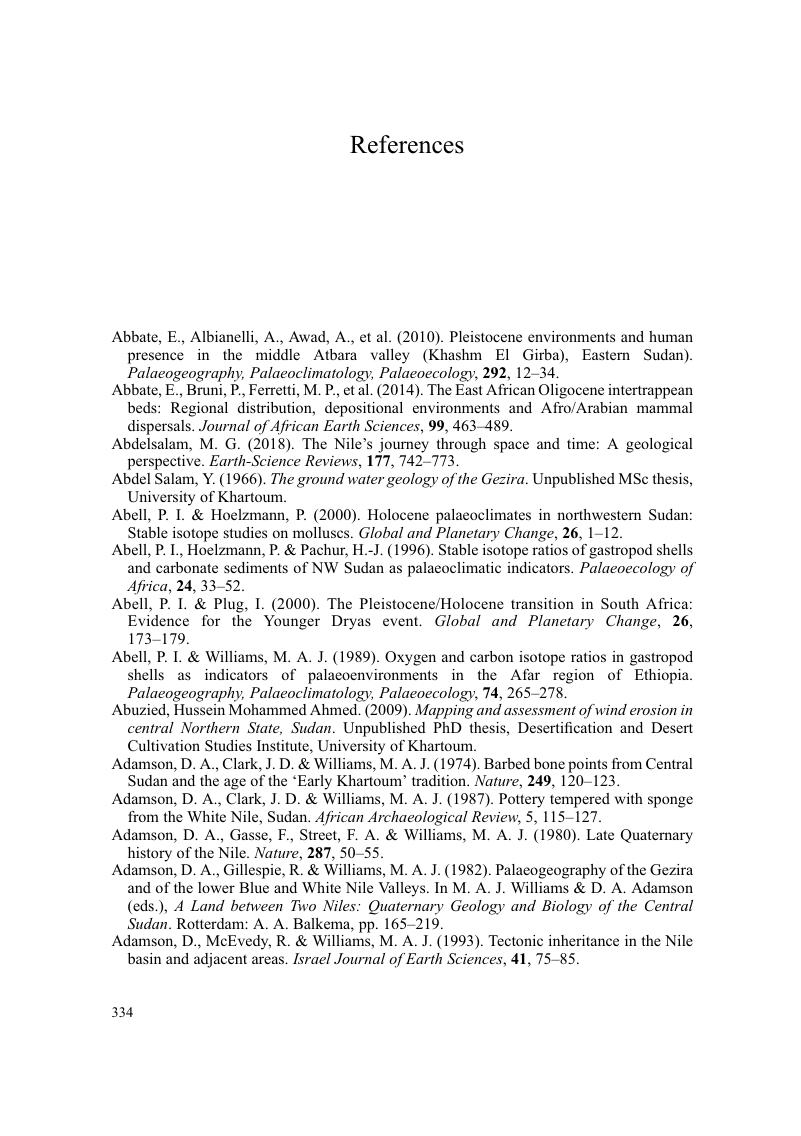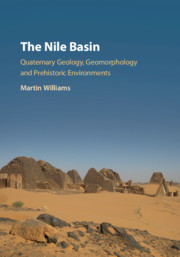Book contents
- The Nile Basin
- The Nile Basin
- Copyright page
- Dedication
- Contents
- Preface
- Acknowledgements
- 1 The Nile Basin: An Introduction
- 2 Evolution of the Nile Basin
- 3 Climate and Hydrology
- 4 Geology and Soils
- 5 Vegetation, Land Use and Human Impact
- 6 The Ethiopian Highlands
- 7 The Ugandan Lake Plateau
- 8 The Sudd Swamps and the White Nile
- 9 Lake Turkana and Overflow into the Sobat
- 10 The Khor Abu Habl Fan and the Desert Dunes of Kordofan and Darfur
- 11 The Gezira Alluvial Fan and Blue Nile Palaeochannels
- 12 The Atbara
- 13 Jebel Marra Volcano
- 14 The Desert Nile
- 15 West of the Nile: The Western Desert of Egypt and the Eastern Sahara – Part 1
- 16 West of the Nile: The Western Desert of Egypt and the Eastern Sahara – Part 2
- 17 The Fayum
- 18 The Red Sea Hills
- 19 The Sinai Peninsula
- 20 The Nile Delta
- 21 The Nile Cone
- 22 Origins of Plant and Animal Domestication in the Nile Basin
- 23 Epilogue: ‘Out of Africa’
- References
- Index
- References
References
Published online by Cambridge University Press: 14 December 2018
- The Nile Basin
- The Nile Basin
- Copyright page
- Dedication
- Contents
- Preface
- Acknowledgements
- 1 The Nile Basin: An Introduction
- 2 Evolution of the Nile Basin
- 3 Climate and Hydrology
- 4 Geology and Soils
- 5 Vegetation, Land Use and Human Impact
- 6 The Ethiopian Highlands
- 7 The Ugandan Lake Plateau
- 8 The Sudd Swamps and the White Nile
- 9 Lake Turkana and Overflow into the Sobat
- 10 The Khor Abu Habl Fan and the Desert Dunes of Kordofan and Darfur
- 11 The Gezira Alluvial Fan and Blue Nile Palaeochannels
- 12 The Atbara
- 13 Jebel Marra Volcano
- 14 The Desert Nile
- 15 West of the Nile: The Western Desert of Egypt and the Eastern Sahara – Part 1
- 16 West of the Nile: The Western Desert of Egypt and the Eastern Sahara – Part 2
- 17 The Fayum
- 18 The Red Sea Hills
- 19 The Sinai Peninsula
- 20 The Nile Delta
- 21 The Nile Cone
- 22 Origins of Plant and Animal Domestication in the Nile Basin
- 23 Epilogue: ‘Out of Africa’
- References
- Index
- References
Summary

- Type
- Chapter
- Information
- The Nile BasinQuaternary Geology, Geomorphology and Prehistoric Environments, pp. 334 - 393Publisher: Cambridge University PressPrint publication year: 2019



